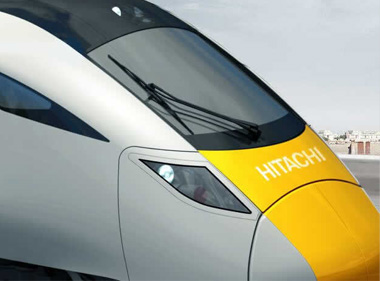
25%
of citizens
say smart city
initiatives
should be a
public/private
partnership
Digging deeper, however, the same survey finds that citizens who say their city will have an impact on their daily lives are more likely to prefer public-private partnerships (73% vs 59% and 58% for national and city-led initiatives respectively). Similarly, those who think that there should be more smart city initiatives, hold the same view (89% vs 82% and 81% respectively). (Figure 1)

"Governments need
to understand what
a private business
is interested
in, and shape
public-private
collaborations
accordingly, to
draw the best from
both parties."
Richard Sharp, a principal of
Arup
"Creativity doesn't happen in isolation," observes Richard Sharp, a principal of Arup, a global firm of designers, planners, engineers and consultants, who leads the management consulting business for the company in Australasia. It is one reason, he says, that cities create innovation precincts, often in partnership with businesses and universities. "Innovation is a fragile process and needs a nurturing environment." In fact, developing co-working initiatives as part of smart city strategies is a trend. "We do this so we can discuss issues and resolve them faster and better," says Setiaji Setiaji, head of Jakarta Smart City.
A meeting of minds?
The notion of a smart city is a combination of
an aspiration to improve quality of life and
competition in which cities across the region
(and globally for that matter) seek to enhance
economic development by attracting businesses,
skilled people, investment and tourism.
In this equation, there is a clear division
of labor, according to Mr Sharp, in which
government has a fundamental role to play in
framing and facilitating their vision of smart
city development. "Government also needs to
bring non-economic considerations, such as
social—and by extension digital—inclusion,"
he stresses. "It is easy to push digital initiatives
but it is harder to reach a diverse group of
citizens with them." On the other side of the
equation is the private sector, which is equally
integral in smart city development in providing
innovative technology solutions motivated by the
marketplace for them.
"The government
cannot run smart
city initiatives
itself, we need to
collaborate with
others, including
with the private
sector."
Setiaji, head of Jakarta Smart
City
"As a government, the citizen is our customer,"
says Mr Setiaji. "Because of that, the public
is very important," he adds, after which he
says private sector collaboration follows. For
instance, he emphases collaboration with
telecommunication companies—which hold great
amounts of data—that can be used to improve
transportation amongst other areas.
Different takes
In the survey, citizens of Auckland (34%) and
Melbourne (31%) were most vocal about the
need for smart city initiatives to be led by
public-private co-operation, in stark contrast
to residents in ASEAN cities, such as Ho Chi Minh
City (28%), Jakarta (28%), Singapore (26%),
Kuala Lumpur (26%), Bangkok (23%) and Manila
(22%). (Figure 2) One reason may be the history
of public-private collaboration in places such as
Melbourne, particularly in transportation, an area
where its partnerships have been highlighted by
the World Bank. Another reason may be the local
culture in which ASEAN countries generally expect
governments to take the lead in many areas.

"We've seen a couple of different approaches
to smart city development," says Mr Sharp.
Generalizing, a top-down approach is more
strategic and is more likely to include elements
of digital inclusion. A bottom-up approach, by
contrast, is a collection of disparate initiatives in
search of a strategic framework.
Learning to work together
"There is still a fair amount of learning on how
best to work together," Mr Sharp says about
public and private sector collaboration when
it comes to the development of smart cities.
"Governments need to understand what a private
business is interested in, and shape publicprivate
collaborations accordingly, to draw the
best from both parties."
To illustrate the potential, however, he cites
work recently done for a large city on their digital
strategy for the next decade, taking a whole-ofgovernment
approach, meaning that all internal
processes were considered in developing an
integrated service offering to citizens. To do
so, Mr Sharp and his team helped the city create
fictional profiles of citizens who represent the
city, which combined with data from the local
government enabled them to identify the best
way to pursue a digital strategy. Once completed,
they tested their hypothesis on city executives
and officials in a workshop to agree to a set of
aspirations before the draft was circulated among
residents as part of a consultation process.
A bright future?
Smart cities which are developed in partnership
between the public and private sectors have
the potential to have a greater impact on the
daily lives of citizens, and may drive demand
for further initiatives, according to the survey
conducted for this research programme. "I
definitely see public-private partnerships
increasing in this area, no doubt about that,"
proclaims Mr Sharp. "There is increased pressure
on both parties to explore things further."
They include aspirations, such as optimized
delivery of services, as well as enhanced
economic development, but also new notions of
a sharing economy and a continued increase in
citizen expectations. "The government cannot
run smart city initiatives itself," agrees Mr Setiaji.
"We need to collaborate with others, including
with the private sector." Smart City Jakarta is
therefore putting transparency first. "We believe
that if government is more transparent we get
more participation," says Mr Setiaji.
Technology-led development in the future must
therefore be even more user-centric with more
transparency, which will also encourage greater
collaboration. "All of those elements are pushing
cities to do more and will create more opportunities
for the private sector," concludes Mr Sharp.








